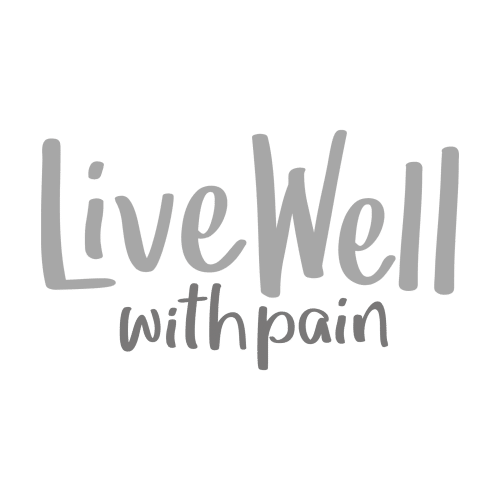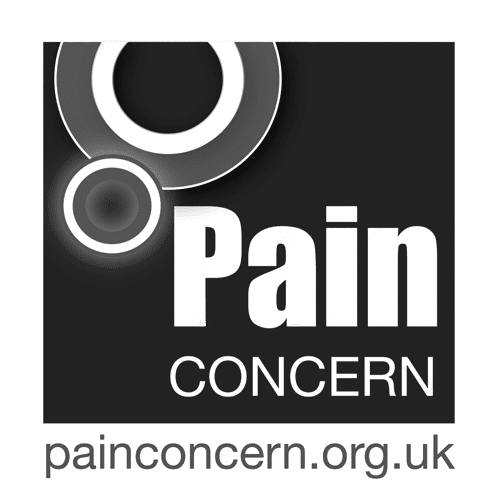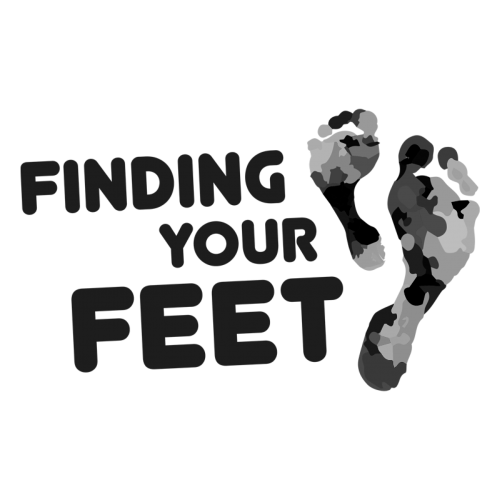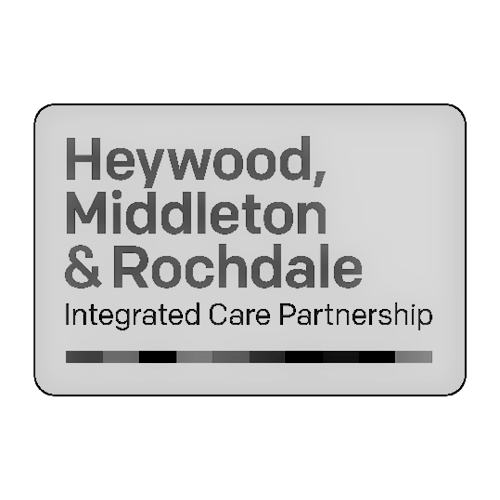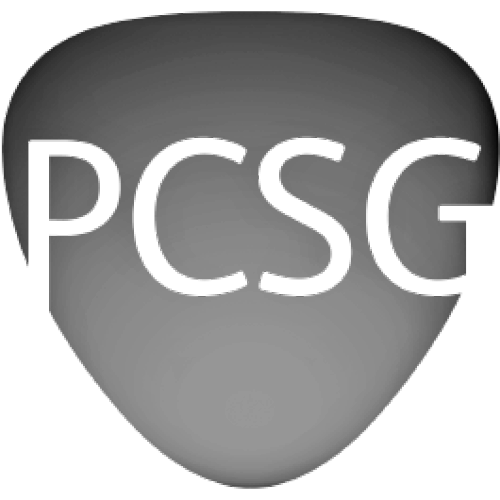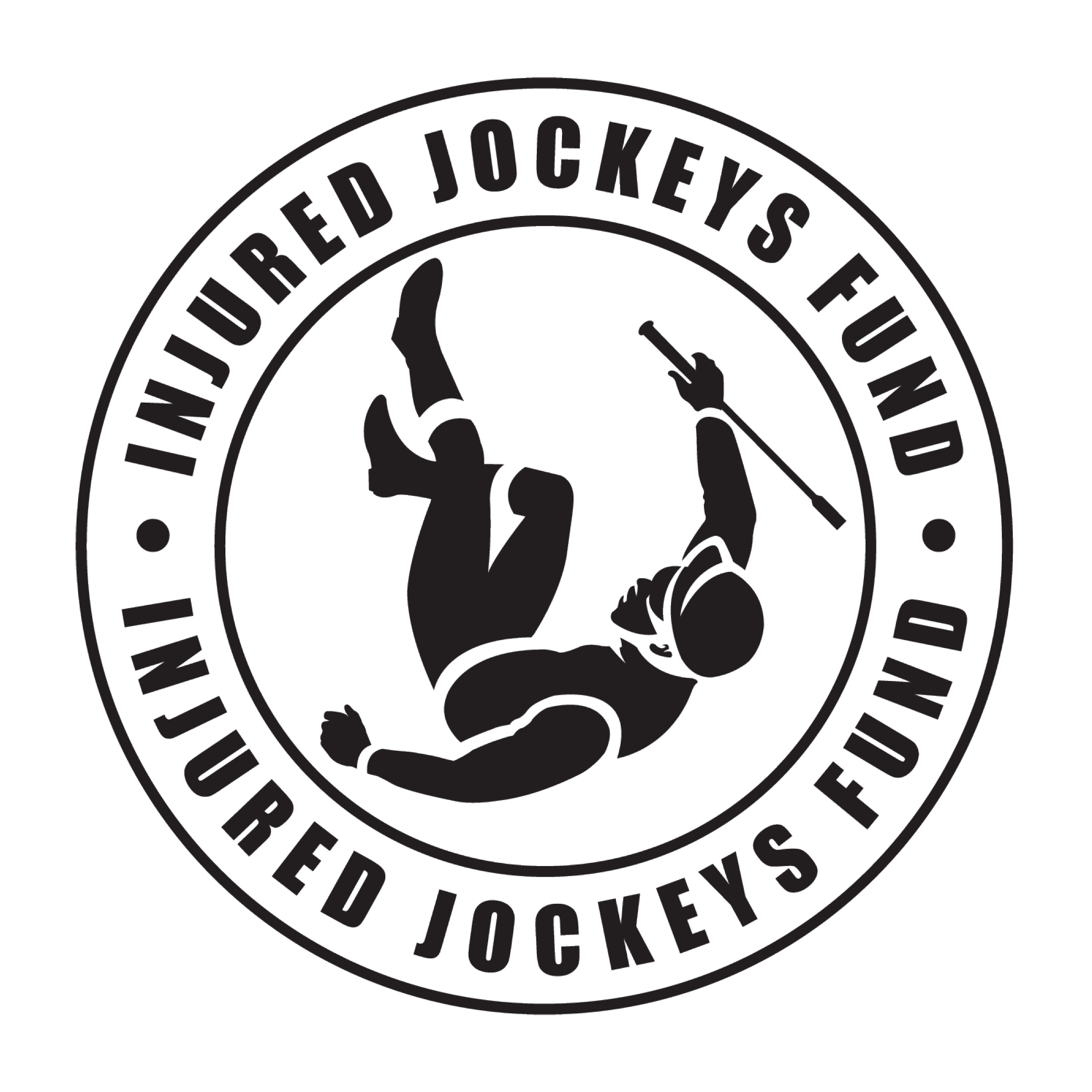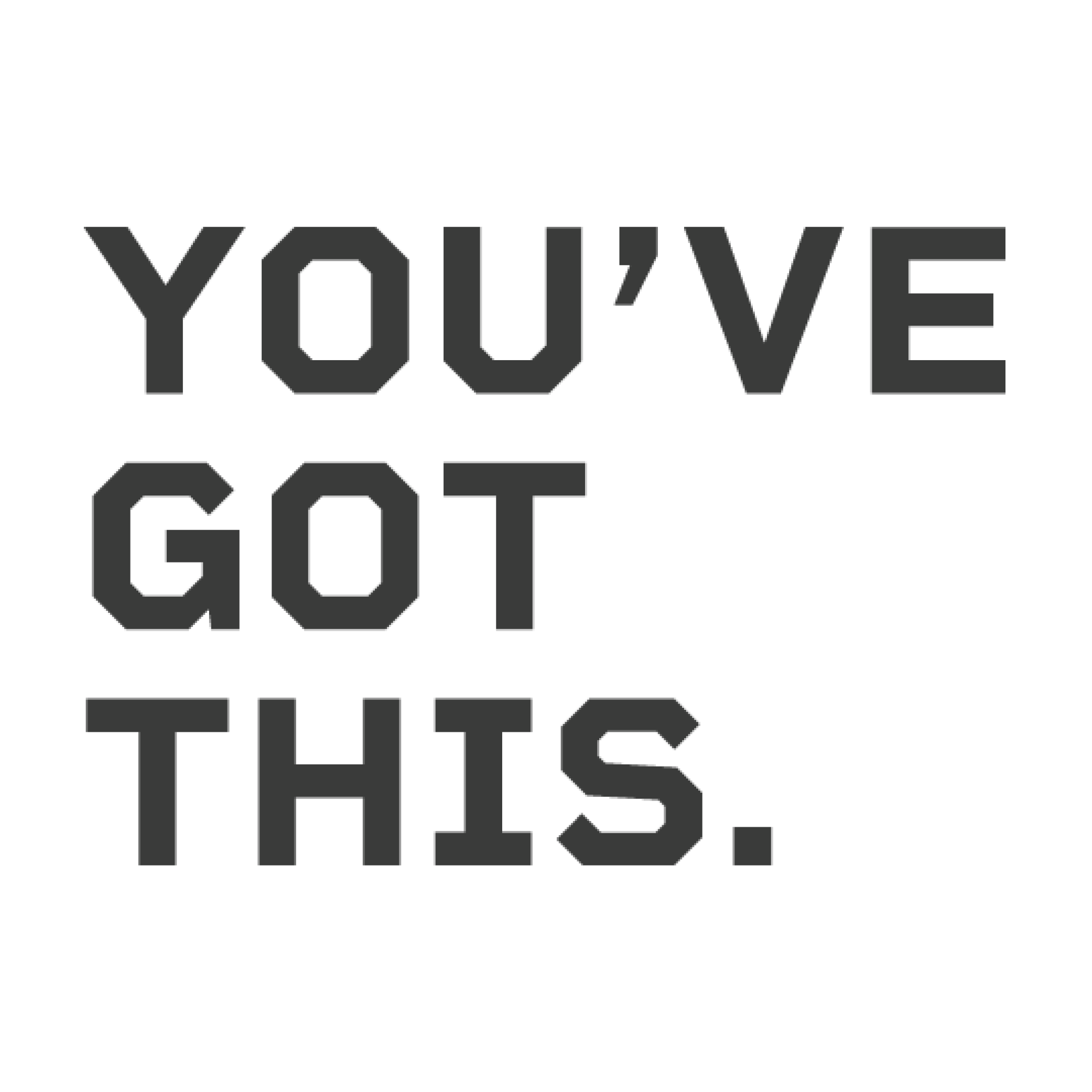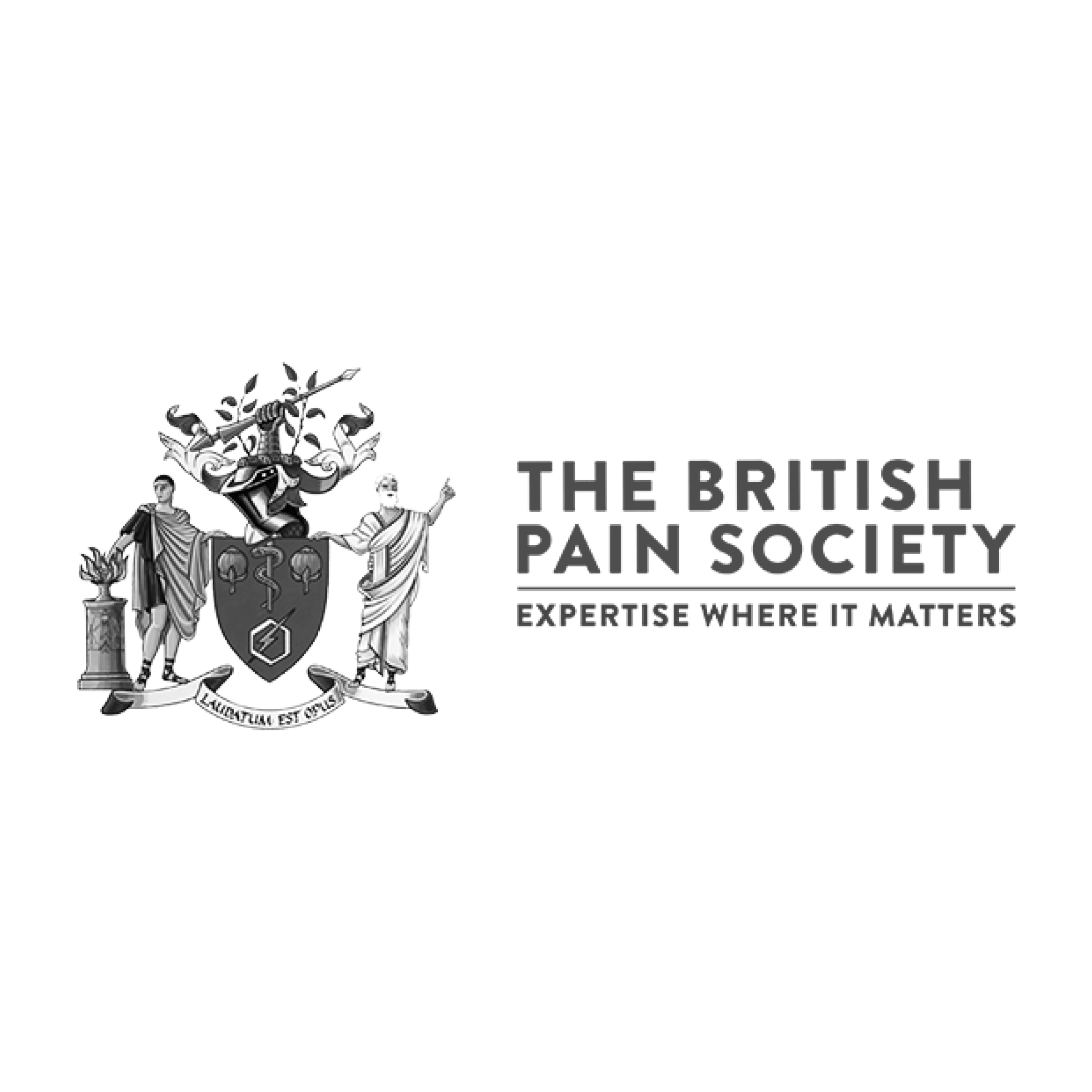If you missed our ‘Pain: Do You Get It?’ event back in October, you can catch up below:
Catch up on the full Q&A session, including questions we didn’t cover on the day, below:
Are you saying that this is all in my head?
Prof. Cormac Ryan: The answer is no; I’m not saying that the pain is all in your head. And then in some ways, I guess I am saying the pain is all in your head!
There’s a difference between saying ‘is the pain all in your head’ and ‘is the pain real’. First thing to say is that all pain is real and that’s vital to be clear about from the offset. To the question then of is the pain in your head? Well the way I explain it is that all our sensations are arguably in our head. If we think about how our visual system works, if we think about vision being an output of our brain, well then you can think yeah vision is in our heads. Just like what we hear is in our heads, just like what we taste is a creation of our subconscious brains. And, as a result, what we feel, including pain, is a creation of our subconscious brain. But that does not mean that it is not real. Of course it’s real! But it is our subconscious brain’s perception of what is there.
What are the impacts of stress and emotions on pain?
Dr Sophie Gwinnett: This is a question that I get asked a lot about: the relationship between stress and emotions and pain.
What we know is that living with persistent pain in itself is a very stressful experience and quite naturally there will be many emotional responses, including frustration, anger, sadness, loss, grief and anxiety about the future. These are all really normal and common experiences that are shared by people living with persistent pain and they’re very natural. But the other aspect of it is that often the urges that we get or the urges that we experience when we’re having strong emotions, might actually hold us back from managing our pain effectively.
So quite often if we’re sad or if we’re low in mood, or if we’re very anxious, or if we’re stressed; our tendency is to want to withdraw, so we withdraw from meaningful activities, we withdraw from people that we care about or who care about us, as often what we want to do is kind of close down and hide away. And whilst in the short term that can feel helpful, actually if we use that as a long-term self-management strategy for a persistent problem such as pain, in the long term that has many costs associated with it. So we can feel very alone, we can feel very isolated, which then just adds to our experience of low mood and anxiety and stress.
So part of the work that I do is around helping people to think about the long-term strategies that they can use to manage these experiences. So with things like stress and emotions, it’s really helpful to acknowledge how you’re feeling and to acknowledge the thoughts that come up with particular emotional responses but not to get too hooked into them and to instead make choices about how you respond and what you do with your behaviour that moves you towards the kind of life that you want to be living.
Niki Jones: I agree completely with Sophie. Learning how to manage my emotions effectively really helped me reduce my pain levels.
Any kind of stress used to increase my pain levels dramatically, physical stress as well as emotional stress, but emotional stress was very triggering. I had to do a lot of work learning. The best ways to manage stress such as writing, journaling about my emotions I found very useful, various psychological techniques and just not getting too caught up in them and using an awful lot of self-compassion. So you make the right choices for yourself, which feeds into what Sophie said about why you do it and reducing the critical self-talk. It’s so important, it’s really important.
If you haven’t had an injury, say for instance you’ve got something like rheumatoid arthritis and there are some ongoing physical changes, like inflammation…Yes, people’s pain systems can be over stimulated but what if there is a burglar trying to steal your car at times? Could you talk about that?
Prof. Cormac Ryan: I guess I would come back to thinking that everything matters when it comes to pain. We know that it’s not just the information coming from our bodies, but our previous experiences, our expectations, our beliefs, our attitudes, our understanding of pain that play a role. All of these things influence our pain experience. Now, if we are aware that there is a ‘burglar’, if we are aware that we’ve got a condition such as rheumatoid arthritis, where there is that tissue pathology ongoing, that does not mean that we can’t work on some of these other factors to help to reduce down the pain, or to reduce our pain-related fear and anxiety.
So regardless of what is, for want of the better word, ongoing injury in the tissues, pain-related fear and anxiety will only serve to increase the sensitivity of that alarm system, and thus likely increase our pain experience. And that’s not a good thing, whether you’ve got ongoing tissue pathology or not. So I guess what I’m saying is understanding and being aware of pain science can help, regardless of whether there’s ongoing tissue pathology or not. It’s not that we’re trying to dismiss the importance of that tissue pathology, but rather just promote an appreciation that everything matters when it comes to pain and let’s use all the resources in our toolkit to help you to manage it better.
When gyms and private physios and massages cost money, how long can we follow advice in the long-term for?
Mahin Kohli: I think we have that view don’t we initially that if we’re going to get some treatment, then that’s going to be hands-on treatment like a massage. Some people think acupuncture as well, or that we have to go out and spend money on a gym membership to remain active and stay fit. And I think the key thing when it comes to any sort of activity is to pick something that you enjoy. So a lot of the time we’re advised by our physios, or we hear from other people, that the gym’s a great place to be. And it is, but only if you enjoy going to the gym.
Now there are lots of things we can do outside the gym to help keep ourselves active that are free to do. Walking can be really good and cycling and so on. But what I’d really say is pick an activity that you enjoy, focus on that activity and perhaps go down that route.
With regards to the part of the question around the massage aspect, we’ve talked about certain things that can give short-term effects and those that can give long-term effects. Now with massage, it can be really useful and it can be a really good tool for help with pain if you get relief from it. But then we’ve also got to look at how long those effects last. And what we find sometimes are that things like massage have a short lasting effect, which feels good, but we have to keep going back for that massage to keep those effects going. Unfortunately, the effects of massage are not usually that long lasting. So perhaps there’s something else that we can do to maybe put in place there, based on what it is about massage that feels good. Is it the relaxation element? Is it the actual pressure element? Is that something that you can get someone at home to do for you? If it’s the relaxation element that’s useful, can we perhaps look at some other techniques? Like perhaps mindfulness or even going for a walk outdoors can be really, really relaxing. But find something that works for you and there isn’t a need to spend lots of money. The great thing about exercise is we can do that wherever. There’s lots of videos as well that we can find online these days that can help us out with exercising at home.
Niki Jones: I don’t actually spend any money now on my self-management of pain. I used to go to the chiropractor a lot but I haven’t been for nearly two years. I manage it myself. I do what’s fun and it is a whole lifestyle change for me, it’s [self-management strategies] not something I can just do for a short time and then not do again. I have to do a meditation every day, do a lot of present moment awareness, do fun things. I love to dance! I’ll just do free dance. It’s moving in a way that feels good for you. I’ve been cycling a lot and I use that time for mindfulness. It’s setting it all together that works in a way for you for your life and you’ve got to find that way.
But I found I don’t need to pay a lot of money anymore. I could really move away from that and now I really empower myself to manage my own pain experience. I didn’t need to rely on anybody else or any medications. I used to have to give myself Sumatripton injections. Now sometimes when I have that pain I’ll actually go for a bike ride, and that’s taken a long time to do that and it’s hard work. But it’s fun! And it’s an improvement in lifestyle so it’s really worth it.
Sue, who lives with Complex Regional Pain Syndrome (CRPS) after an ankle trauma, says the sensitised system and the car alarm analogy explains some of her pain, but not the intermittent acuity of the pain, or the fact that it’s become bilateral (it’s now on both sides), how would you explain that?
Prof. Cormac Ryan: The honest answer is that I can’t really explain that! Complex Regional Pain Syndrome, the clue is in the name – it is indeed complex and my heart goes out to you, it is a really difficult, difficult condition. But I can take a stab at trying to explain it to some extent in that our alarm system, when it becomes sensitised, and when ‘Assumpta’ is in overdrive, trying to protect our body, she will put everything in place to try and protect it. she will do whatever she can. And that might not necessarily simply be to do with pain. She will sort of increase all our alert systems, all our alarm systems, all our protective systems, our immune system our movement (musculoskeletal) system. Every system that she can access, she’ll put on high alert to try and protect the part of the body that she’s concerned with.
Now that mirroring of pain, why pain sometimes moves to the other side, is a particularly challenging issue. Some people talk about things like mirror neurons in the brain, where essentially the system gets confused. I guess we touched on it a little bit in terms of how these chemical changes can spill over into different neural pathways, and how it’s a bit like, if your house is on fire you might call your neighbours to come and help to try and put it out, and put them all on alert as well. And in a similar way, these chemical changes kind of spread out to other neural pathways. Those other areas can go on to become overprotective, even if anatomically they’re not right beside each other.
Living with pain is tiring especially when you’re living with pain and fatigue, how do you keep going through both of those barriers?
Niki Jones: That’s very difficult and for a long time, I just plodded on and I was struggling. Again, it comes down to self-compassion. And to be honest this is where support from the right healthcare professionals comes in to keep you motivated and to give you a reason to move on. I didn’t have that really. I was just lucky that certain things happened to give me the impetus to start to try some of these things and to learn that my pain didn’t mean harm, which reduced my fear and it builds over time. If you start small, you start with something that’s fun then you see a small result. That’s what gives you the sort of motivation to keep going and making small changes.
It’s really hard to be positive and it’s really hard to take on these things. And it takes an enormous amount of courage. I don’t think anybody should ever underestimate how much courage it takes to make these changes in your life. And to take on yet another thing that might not work, but they do.
I talk of it like a picnic, there’s some staple ingredients in a picnic that we all have that will help. But it’s finding what works for you in your picnic. And that takes some trial and error, but it’s really worth it if you can find it, it really is. But it does take courage. And that’s again where peer support comes in. If you can find a tribe who can help you that’s really useful as well.
Dr Sophie Gwinnett: I think it’s really helpful just to recognise that there are limited reserves of energy and of time or finances or of all of these kind of aspects of trying to live with pain. So it’s about making meaningful choices. If you have limited energy, what really matters to you in your life? Who is it who matters? What experiences matter to you? What activities matter to you?
I’ve seen the question, should I be walking or cycling if my knees hurt? Actually, what I would say is what is right for your knees doesn’t matter. It’s about what you are going to engage in in the long term because it brings you some element of joy. Go for what brings you joy, what gives you a sense of meaning and purpose again. Because when you’re living with chronic pain you can feel very stuck. And you can feel like those elements of purpose and joy in your life have been removed. So yeah, engage with what matters, show up for all of the experiences that can still bring you an element of joy. Not perhaps in the same way that they previously did, but still show up for them when you can.
If you’ve got a patient who’s on opiate meds and has been for many years, it can be quite stressful to talk about removing that medication. We also hear lots of negativity about opioids. How do you address that what would be your advice on the use of opioids?
Mahin Kohli: It’s really not an easy one by any means. I think reducing opioids is very, very difficult so that’s the first thing to mention here. Especially if you’ve been on it for many, many years.
The first thing is, when we’ve been taking opioids for a number of years, our body will be expecting that level of opioids. If we completely stop the opioids altogether we would expect some quite harsh withdrawal symptoms so we wouldn’t want to do that at any point. And if anyone’s on listening to this talk today and they are on opioids, I’d urge you to not just stop your opioids, that’s really, really important, because that can be really difficult. And if you get some real spikes in your pain, that can actually lead to more opioids in the future as you go back onto yours and you seek further opioids.
I’m glad we’re talking about this because often when we have pain, opioids work for a certain length of time. And I think Cormac mentioned this earlier in the sense that, actually in the long-term certain medications stop being helpful. So it might be the case where you are put on an opioid medication like Cocodamol then you visit a health professional when the medications stop working as well and you’re put on something stronger. And there’s a bit of a cycle that we see here where opioid use increases over time.
Now if we were to stop the opioids we’d get some side effects that I did mention before. I think the point to know here is how comfortable do you feel, first of all, in reducing your opioids? I think it’s important to be at the right stage and at the right place. Is there any other support around you that can help support that reduction? Some of the work that we do is through a pain management program that’s actually works on helping people develop other strategies, in place of opioids and in place of medications. Medication is only a very, very small part of the overall pain management picture. There’s lots of other things that we can do to help to manage the pain, and opioids already a small part. But it’s useful to know what those other strategies are.
So if it’s the case where, actually, you may not be seeing anyone for your pain, but you are worried about coming off opioids, finding out whether there’s any pain management services around you can be really important, so that’s probably the key step. I’d always do this under guidance, because it’s going to be a tricky time, and you may have some pain flares. Even if you do it in a very, very gradual way, and reduce your opioids, there is a chance that, for a certain period, you will get increases in your pain initially. But they will likely plateau and settle down. It may not be possible to come off opioids altogether if you’ve been on them for many years, and that’s okay as well. But the less opioids we’re taking, the less side effects we’ll probably be getting. And with less side effects, that can help us engage in the other things that perhaps we’ve not been able to engage in over the years, when we’ve been struggling with pain and taking opioids that can make us feel quite drowsy and so on.
Niki Jones: I’ve had quite a difficult time with opioids. I was on a very high dose of Fentanyl. I mentioned that several things happened to start me on a road to recovery and actually reducing my Fentanyl was one of them.
I reduced from a 100 microgram patch down to 75mg and it sort of woke me up a bit. It gave me more energy, more cognitive function and felt interested to engage in life. And I’ve definitely found every decrease, although the pain increases for a short while, I feel so much better after each decrease, it’s amazing.
But I was absolutely certain that my opioids were helping me. At one point there would be no way I could have countenanced any kind of reduction. And nobody was offering me anything in place of them. So it was only when I got some really good self-management in place that I would actually happily think about reducing. Unfortunately I didn’t have the support Mahin talks about, which is so important, and I reduced too fast and I’ve actually ended up in quite a difficult situation because of that. But I’m doing really well now and I’m on half the dose I was before, well less than half the dose, and every time I reduce it’s so much better. But please don’t taper your opioids too fast it’s not worth it, they’re serious drugs.
You said that everything matters when it comes to persistent pain, does that include the weather?
Prof. Cormac Ryan: Yes, it does include the weather! It includes everything!
If I can, I’m going to spin back to a previous question, about money and our economic state. You can’t have any conversation at the moment without speaking about Covid, and the influence that Covid is having on society at large. And it is going to be influencing persistent pain, and it’s going to be influencing it through lots and lots of different ways. But one of the ways is from a financial perspective. One of the most fascinating studies that I ever came across was one looking at the economy and pain. It concluded that people’s perceptions of how economically safe and secure they are influences their experience of pain. And I found that a pretty mind-blowing finding when I read it. It really brought home for me this idea that everything matters when it comes to pain, this idea that something that’s way outside my body can be influencing in some way the pain I experience. And that’s with really robust scientific evidence to demonstrate that.
If we think about the stressor that is being financially insecure, it makes sense how that can increase the sense of danger in my situation consciously and unconsciously. It’s a perfect example of how everything matters when it comes to pain, and weather is no different. And there are some really interesting studies charting how people’s experience of pain maps weather changes.
But I think the economic one is one of the most startling situations, and if we think about Covid, and if we think about how many people are going to be economically affected by it, I think it’s something we need to really be aware of in this time in terms of how it’s going to be affecting people with persistent pain.
Vanessa finds it difficult to know when a pain flare up is an indication that the exercise she’s been doing is just too much for her joints at that time versus how much is just her system being sensitised which she could work through Does she push through the exercise or does she back off until it settles?
Mahin Kohli: That balance can be really difficult to get. But I think the key thing here is it it’s thinking about that alarm system and how we can maybe just dampen down and settle down that alarm system a little bit. It’s really important to work with your pain, rather than against it in this situation.
Let’s say we’re doing some exercises causing some pain but we carried on pushing through, it’s likely that that pain may push back harder. So we might be causing a flare up to become a little bit worse in that situation. Alternatively, backing off may not be helpful either. Because that means getting into a situation where we’re doing some activities and the pain gets a little bit too much, so we stop our activity. The pain settles down a little bit, and then we may bring up our activity again and we get a bit of a cycle. and we call this the boom bust cycle, where we have periods of over activity and then periods of underactivity and that’s kind of related to the pain that we’re feeling. Many people may have felt that before and I think the key thing here is to find what your baseline is. So if you’re doing exercises and it’s too painful it may be that you don’t stop doing those exercises, but you just bring it back slightly. And there’s a saying: start low and go slow, but build up slowly.
As an example, let’s say someone did a 20-minute walk, and they were really in a lot of pain afterwards. The option would be to continue walking the next day but just doing that 20 minutes again until the body got used to it. But again, that could be unhelpful it could cause more of a flare. Or the other option may be to not do any walking, which again may not be helpful, because our body’s not getting that exercise, that movement. And also when we do return to walking, it may be more painful to do so.
So what I’d probably suggest using this example would be to maybe half it. So go for something like 10 minute walk, have a bit of an experiment with yourself, to find out how much you can do. Even if afterwards you feel like you could probably do a little bit more, you’re not going to at this stage. So that’s probably that kind of key area: stopping when you feel you could do a little bit more then working up from that. Do that consistently for a while then build up slowly from there.
What does the panel think about practitioner communication? What is the impact of messages imparted by GPs, physios etc? What can the impact of those messages be on the patient experience on a person’s pain experience and eventual outcome?
Niki Jones: I think it’s pretty crucial, the messages you get from your health care professional. They can be hugely negative or they can be hugely positive.
Initially when I went to see the neurologists and neurosurgeons, and they would be telling me I had a really severe case and then later it became recalcitrant and intractable. And in some ways I almost felt validated by that. But that was very short term and then it became very difficult and it entrenched in me a loss of hope. A loss of control. It was actually really difficult. And while I really respected their efforts to help me, it didn’t improve the outcomes of any of my surgeries, it didn’t help me live day-to-day life. I felt completely out of control. I had no control over the pain at all. So finally being able to have some hope and changing that locus of control into myself so that I could actually address my pain was so empowering and if just one healthcare professional had taken that tack with me earlier on that, it might have really changed my trajectory.
When you’re living with pain have you got any tips to help with sleep? And how can you help me think straight when I’m living with this pain?
Dr Sophie Gwinnett: With sleep, what we tend to find is there’s not one magic cure. It involves changing habits very gradually, lots of small kind of steps over a period of time and there’s just so much that you can do.
I can’t give it credit here, but what I would say is go away and look at ‘sleep hygiene’ strategies. But also think about ways to manage stress and the negative thoughts that love to show up for all of us in the middle of the night if we wake up, and thinking about meditation, mindfulness practices or having a little notebook next to your bed where you can write those things down in the middle of the night to come back to in the morning. And give yourself time to implement those. It takes a long time to change our sleep habits, and often people will have a go at something and they’ll come back to me a week later and say ‘oh it’s not had an impact!’ But really give it a month, give each new change a month before you perhaps decide to try something else.
When it comes to thinking, notice the thoughts that you’re hooking into and think about the long-term costs of hooking into certain thoughts. So I think Niki mentioned earlier about self-criticism, and when you’re struggling and you’re feeling stuck with difficult life experiences, you’re much more likely to have very self-critical thoughts. And the more that we hook into critical thoughts about ourselves, the worse we feel. Also when we’re low in mood and when we’re anxious or stressed, we have something called cognitive bias. Which means that we’re much more likely to tune into thoughts that are very negative or which hold us back. So notice what thoughts you’re hooking into, acknowledge those thoughts and then do something meaningful with your behaviour. Engage fully in something. It could be making a cup of tea, it could be going for a walk, it could be speaking to a friend. But just find an activity that feels meaningful that you can just fully engage in, despite those thoughts showing up.
The following questions were asked by delegates in the Live Chat on the day, but we ran out of time to answer them live in our session. After the event, we asked our panel to share their answers to them.
Can I ask about stress and its impact on chronic pain as well as the changes in weather that affect my pain, especially in autumn and winter?
Prof. Cormac Ryan:
STRESS
Stress can have a significant impact on the pain that we experience. Biologically, the chemicals produced when we are stressed feed into the sensitisation of the pain alarm system. There is plenty of evidence for this in the scientific literature, where life’s stressors can increase the pain experience. For example, in students, their pain levels are higher during exam time when they can be super-stressed. In another example, those who are more stressed about dental procedures are more likely to report higher pain levels when undergoing dental procedures. Also, those who perceive they are under greater financial stress are more likely to have higher pain levels. Biologically this is completely understandable – stress can grease the wheels of the pain system. Of course, don’t forget that the pain itself is a stressor, as well as the associated stress of wondering about what the pain might mean or if it will ever go away. This is one reason why active physical and psychological therapies such as mindfulness and exercise can be so helpful for people with persistent pain.
WEATHER
Anecdotally many people report that their pain changes with the weather and this fits with the idea that “everything matters when it comes to pain”. There are some neat studies that demonstrate this relationship. It does not mean that weather causes pain, but it does show that the weather can influence pain. A large study of thousands of people undertaken in the North of England showed that people were more likely to experience pain (and pain that was widespread) on winter days in comparison to summer days. The exact reason as to why this is the case no one knows for sure though that same study did demonstrate a relationship between the amount of sunlight and the temperature, with less pain on warmer sunnier days. It was proposed that this may be because people are able to be more active on those sunnier days, get better sleep and be in a better mood. A link to the study is here: https://academic.oup.com/rheumatology/article/49/8/1513/1789786
I’d really like to know about emotions as well as stress and the impact on chronic pain. Having had PHN for 7 years I am really trying hard to reduce my Pregabalin.
Dr Sophie Gwinnet: Emotions are a mind and body experience. For example, when we are stressed our thoughts are likely to become more catastrophic or self-critical, whilst in our bodies we will experience a range of physical changes such as muscle tension, fatigue and bodily discomfort. Living with persistent pain can activate intense feelings of sadness, frustration, stress and anxiety. These feelings will be experienced in the body and mind and can add to the experience of pain. We can then get caught up in a cycle of worsening mood and pain.
There is also a degree of ‘secondary suffering’ that can result from stress. We might begin to withdraw from friends and family, or from activities that we value. We might ‘beat ourselves up’ for feeling the way that we do. Ironically, it is connecting with the things that really matter to us (our values) and treating ourselves with kindness that can help us to overcome feelings of stress, low mood and anxiety.
It is important to recognise that difficult emotions are a normal part of the human experience. However, if you feel stuck in a cycle of worsening mood and pain, breaking free from this cycle will involve changing how you approach things. Reconnecting with the people that you love and finding ways to engage in valued activity helps, as does engaging in self-care and soothing activities. Most importantly, it is important to recognise that in times of distress, you can treat yourself with kindness and talk to yourself as you would a dear friend.
I have had myoclonus dystonia all my life, which has caused and exacerbates arthritis, fibromyalgia and osteoporosis. I have worked hard to come off opioid painkillers and benzodiazepines. I am waiting for DBS. My question is, how can I make my consultants understand that my pain is still there but I am coping. They are dismissive because I don’t complain.
Mahin Kohli: Firstly, well done for coming off your opioids and benzodiazepines! I can imagine that wasn’t easy.
This is a difficult question. The key thing here to consider is what would you like help with from your Consultant? You know from your personal experience that medications are not always helpful for pain in the long-term. But we also know that there are many other things that can help manage your pain. Is there anything else you would like help with at present that a Consultant could either assist with themselves or refer on appropriately? Perhaps it may be that you would like to engage more in social activities or work. Perhaps you feel you would benefit from gaining some advice on how to improve sleep or manage difficult emotions that may present from time to time.
Having a clear idea of what difference you would like to see in your life in the future is the first thing. Second is then thinking about what help/guidance you may need to get there. Present this to your Consultant. Don’t forget that you are the expert when it comes to your pain and you know what you want to be able to achieve. Health Professionals sometimes see someone coping, but not realise what else is important for them to be able to do.
Do you happen to know if there is any physiotherapists or pain management advice available to people with Endometriosis? I am under Gynaecology and have had two laparoscopies and only ever been offered surgery or very strong pain relief.
Mahin Kohli: Unfortunately, I will have difficulty answering this question without knowing the exact services available in your area. What I would suggest is to have a discussion with the Gynaecology team that you are under to see if there are any Physiotherapy options available to you. There is a chance there will be and a referral to a Women’s/Pelvic Health Physiotherapy Department is likely the best option here. Most hospital trusts have a Women’s Health Department. Failing that, have a discussion with your GP about referral to a service that specialises in Pain Management or Women’s Health.
I use activity as well as psychological techniques to manage pain and apparently have a high pain tolerance and never take meds however ultimately have to have the occasional steroid injections. How far can these techniques go to “recover” chronic pain as everyone has different pain levels?
Prof Cormac Ryan: Everyone’s pain journey is different – pain is such a unique experience to the individual. Again, I think this relates back to the key message that everything matters when it comes to pain – I believe that is why some interventions can improve the pain for some people under certain conditions on certain occasions and not for others. For me it is relates back to Assumpta – if on balance, with all of the context considered, Assumpta believes that we are safer (our tissues are safer) as a result of this intervention it is more likely she will feel there is less of a need to draw attention to the area and less need to protect it and thus she will produce less pain (don’t forget the purpose of pain is protection).
There are some interventions that on average appear to work for most people in a consistent way and for some the improvement might be big and for others small but for the majority it brings about benefit – exercise is such as intervention. This, combined with the fact that it has very few side effects, is a key reason why it is recommended in so many clinical guidelines for persistent pain.
Commenting on steroid injections is tricky because there are so many different approaches that be applied to so many different areas and so many persistent pain conditions. I have never been involved in steroid injections and I am no expert in this area. However, probably the only thing I would say is that for back pain, where the greatest amount of research has been undertaken, injections (which include steroid injections) are not recommended by the NICE guidelines – this is a quote from those guidelines “Overall the Guideline Development Group agreed that there was no consistent good quality evidence to recommend the use of spinal injections for the management of low back pain. There was minimal evidence of benefit from injections, and reason to believe that there was a risk of harm, even if rare. The group consequently agreed that it was appropriate to recommend against the use of spinal injections for people with low back pain.”
Of course this does not mean that steroid injections are not effective in some situations for some people but it does provide useful insight into the use of this intervention for one of the most common persistent pain conditions.
It is very hard for a support worker who is not medically trained to get this message across, especially when the person they are working with has a diagnosis from the doctor and a repeat prescription for painkillers. Any advice?
Mahin Kohli: Yes! Signpost to our webinar recording here: https://www.youtube.com/watch?v=m2pG08kL0PM
Or signpost to other resources if you are finding it difficult to get the message across. A list of resources can be found here: https://www.flippinpain.co.uk/resources/
We can offer advice and signpost, but at the end of the day the person living with pain has to discover their own journey because it looks different for everyone.
I’m a Physio student from Uni of Essex. What are the more effective psychological interventions/combinations available to MSK physios to treat persistent low back pain? ie CBT, MBSR, CT.
Dr Sophie Gwinnet: Hi there, psychological approaches that incorporate acceptance, mindfulness, values based goal setting and self-compassion are helpful. Acceptance and Commitment Therapy (ACT) and Compassion Focused Therapy (CFT) are widely used by psychologists in pain management. For Physios, helping people to mindfully notice their thoughts about pain and how they might help or hinder their self-management, and setting goals based upon values can be useful.
Are nerve blocking and epidural injections useful for reducing pain?
Mahin Kohli: Sometimes, but more so when the pain is acute (present for less than 3 months) and/or when there is evidence of nerve root involvement, such as in sciatica. The longer that the pain has been there, the less effective these types of interventions are, similar to painkillers.
See this extract from the NICE Guidelines for lower back pain, also cited by Cormac to a question previously:
“Overall the Guideline Development Group agreed that there was no consistent good quality evidence to recommend the use of spinal injections for the management of low back pain. There was minimal evidence of benefit from injections, and reason to believe that there was a risk of harm, even if rare. The group consequently agreed that it was appropriate to recommend against the use of spinal injections for people with low back pain.”
Some forms of pain, such a nerve pain are often accompanied by other symptoms such as tingling. Do your strategies help with these symptoms too?
Niki Jones: Yes, these strategies have reduced a lot of the extra nerve sensations I used to have. It takes time but it does help. Learning to reduce focus on these sensations really helps.
Have you all heard about the Painful Truth? A new study on the impact on people with chronic pain of the lack of good representation in film and TV.
Niki Jones: No, but I will look it up!
Can you share a link to a good study about the link between economic health and pain? Sounds fascinating and very relevant.
Prof Cormac Ryan: It is indeed fascinating! Please see attached the link to this study here: https://journals.sagepub.com/doi/abs/10.1177/0956797615625640
Chou, E.Y., Parmar, B.L. and Galinsky, A.D., 2016. Economic insecurity increases physical pain. Psychological Science, 27(4), pp.443-454.
Any tips for how to sleep without having to resort to opioids? No matter how hard I try to keep mine down, I struggle to sleep as I cannot use any of my distractions etc when trying to sleep.
Dr Sophie Gwinnet: Sleep tends to follow a natural rhythm, but it is very common for factors such as pain, stress, anxiety and medication use to disturb this rhythm. It is unlikely that one single strategy is going to drastically improve your sleep, it usually involves making a series of small changes which over time will teach your brain and body to achieve the sleep it requires.
Here are some factors that you may want to consider:
The Environment: Limit light in the bedroom, remove gadgets with lights and add blackout blinds if possible. Limit noise and avoid working or exercising in the bedroom. Avoid screens for 2 hours before sleep.
Diet and Exercise: Limit caffeine after 2pm, limit alcohol and avoid hot and spicy food in the evening. Exercise during the day will help the body to feel fatigued and ready for sleep at night, but avoid exercising in the evening as this can stimulate you and delay sleep.
Routine: Only stay in bed for the number of hours that you require sleep. Start a wind-down routine in the evening, stick to a consistent bedtime and waking routine and avoid napping at other times.
When you can’t sleep, avoid clock watching. Notice what your mind is telling you and write thoughts down in a notebook next to the bed to come back to in the morning if thoughts are keeping you awake. Have a go at some slow breathing and relaxation. If you’re unable to sleep, focus on rest instead. Rest is very important for the mind and body and you can achieve rest even when you can’t sleep.
My chronic pain consultant told me there is no hope
Niki Jones: CHANGE YOUR PAIN ADVISOR TOMORROW!
I am interested in further study in pain management and wondered if there are any advanced physio Masters programmes specialising in this that could be recommended?
Felicity Thow: My advice would be to read up on the syllabus as I found in my post-graduate Diploma there was often a strong focus on acute pain because there was a wide variety of professions on the course like theatre recovery nurses and ITU staff. Don’t be afraid to ask about the background professions of the teaching staff to make sure it’s the right course for you.



